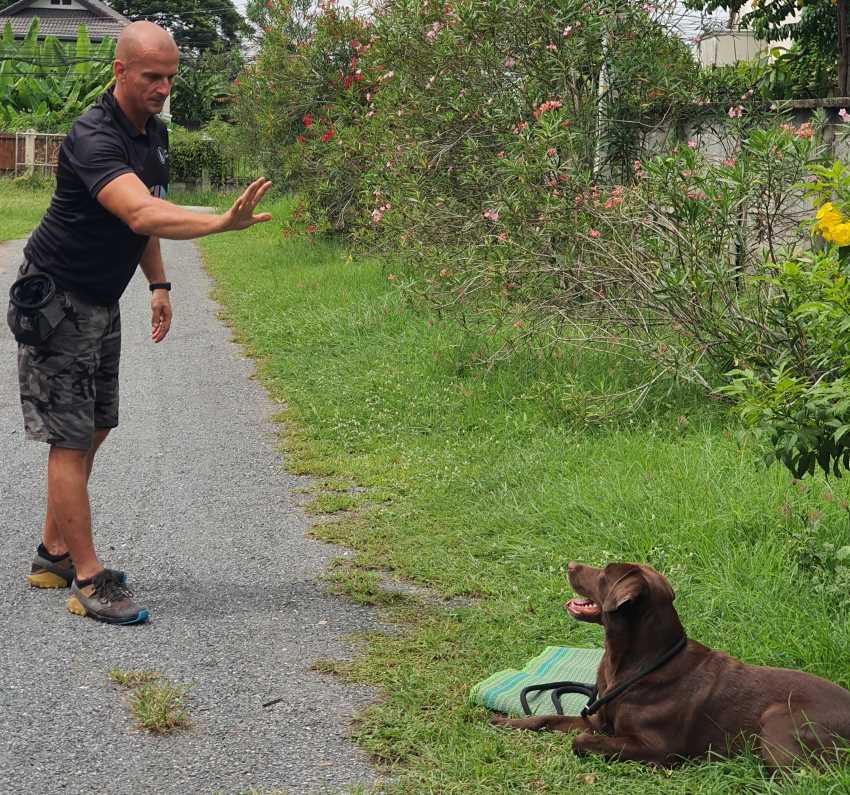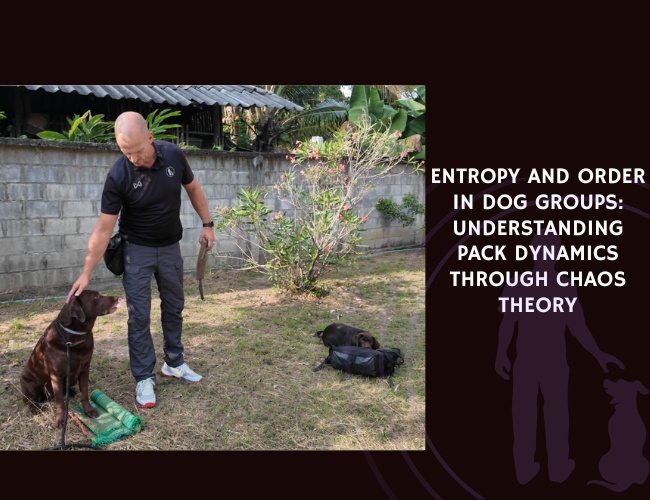The Origins of Traditional Dog Training
Evolution of Training Methods from Mid-20th Century Military Influence
Traditional dog training methods have deep roots in mid-20th century military practices. These methods often prioritized obedience and discipline, demanding strict control over the dogs. Military dog training techniques influenced civilian training approaches significantly during this period, placing a strong emphasis on the dog’s subservience to the handler. The primary goal was to command immediate and unquestioning compliance from the dog, often at the cost of the animal’s mental and emotional well-being.
Dominance Theory and Its Widespread Adoption in Civilian Dog Training
At the heart of traditional dog training lies the dominance theory, which gained traction around the 1950s. This theory suggested that dogs operate within a hierarchical structure similar to that observed in wolf packs, whereby the dog-owner relationship was framed as one of dominance and submission. The handler, or “alpha,” was seen as needing to assert authority over the dog to maintain control. This outdated view was largely born from misinterpretations of wolf behavior observed in captivity rather than natural environments.
Common Tools and Techniques Used in Traditional Training Approaches
Dominance theory shaped many of the tools and techniques used in traditional training methods. These tools were designed to enforce obedience through correction-based strategies that often relied on fear and physical discomfort. Here are some of the most commonly used implements:
- Choke Collars: These collars would tighten around the dog’s neck when pulled, discouraging unwanted behaviors through the threat of strangulation.
- Prong Collars: Featuring metal prongs that press into the dog’s neck, these collars relied on causing physical pain to correct behavior.
- Electronic Collars (E-Collars): These devices delivered electric shocks to the dog as a means of aversive conditioning, aiming to stop undesirable actions immediately.
Traditional techniques included physical corrections such as leash jerks and other forms of punishment designed to suppress “undesirable” behaviors. This often led to fear-based compliance rather than genuine understanding and willingness to follow commands.
Used extensively, these methods created an environment where dogs were more likely to become fearful and anxious. The focus was primarily on eliminating problematic behavior rather than understanding its root causes. Consequently, dogs trained under these methods were often compliant out of fear rather than trust.
Understanding the origins and shortcomings of these outdated practices is essential for appreciating the remarkable shift towards more humane, science-based methods. By evolving our approach, we aim to foster a better relationship between dogs and owners built on trust and understanding.
Challenging the Dominance Theory
Scientific Research Debunking Traditional Dominance-Based Approaches
Imagine having access to supportive and professional insights that reshape how you understand dog training. That’s precisely what recent scientific research offers. Traditional dominance-based training, which once emphasized the “alpha” concept, has been thoroughly debunked through modern studies. Initially, dominance theory gained traction based on studies of captive wolves. However, it turns out that these studies were flawed. New research reveals that wild wolves have much more complex and familial social structures than previously thought, challenging the rigid hierarchy narrative that inspired dominance-based training methods.
Misinterpretation of Wolf Pack Behavior and Its Impact on Dog Training
You might find this helpful—the original dominance theory relied heavily on misinterpretations of wolf pack behavior. Researchers once believed that wolves operated under a strict “alpha” system, where a dominant leader controlled the rest. This theory was then mistakenly applied to dog training, leading to practices that aimed to establish similar control over dogs. However, current studies indicate that wolf packs function more like family units, where cooperation and social bonds are crucial. This misinterpretation led trainers to implement harsher methods, which overlooked the true nature of canine social structures.
Negative Consequences of Fear-Based Training Methods on Canine Behavior
Imagine the detrimental impact on a dog’s well-being from fear-based training methods. These outdated techniques, focused on asserting dominance, often foster fear rather than trust. Fear-based methods, like using choke collars and prong collars, can lead to significant stress and anxiety in dogs. Research has shown that such techniques can increase aggression and result in a breakdown of the human-canine bond. Dogs trained using fear often exhibit more stress-related behaviors and are less confident in interacting with their environment.
Fear-based training not only impacts the dog’s mental health but also undermines the overall objective of training, which should be to build a positive, trusting relationship between the dog and owner. These negative consequences have prompted a shift towards more humane and effective training philosophies.
As we delve further into the benefits of modern training methods, you’ll discover how rewarding desired behaviors and understanding a dog’s unique needs can lead to more positive and lasting results. Transitioning away from these debunked approaches is key to fostering better communication and trust with our furry companions.
The Science-Based Revolution in Dog Training
The journey toward modern dog training began with the introduction of positive reinforcement and operant conditioning principles. These methods rooted in the behavioral psychology of B.F. Skinner, emphasize rewarding desired behaviors over punishing unwanted ones. This approach creates a learning environment focused on motivation and encouragement, rather than fear and avoidance.
Introduction of Positive Reinforcement
Positive reinforcement involves giving a reward immediately after the desired behavior is exhibited. The reward can be treats, praise, or play, which makes the behavior more likely to be repeated in the future. This method has been shown to effectively motivate dogs and enhance their learning experience by fostering a positive emotional state during training.
- Positive Treats and Rewards: By using treats, toys, or affection, trainers create a pleasurable experience for the dog, associating the behavior with positive outcomes.
- Clicker Training: Utilizing a clicker to mark the exact moment the desired behavior occurs allows for precise communication and immediate reinforcement.
Shift from Obedience-Focused to Relationship-Based Training
The paradigm shift from obedience-focused training to relationship-based training has revolutionized the way we interact with our canine companions. Traditional methods prioritized control and submission, often at the expense of the dog’s emotional well-being. Today’s approaches, however, emphasize the importance of building trust and understanding between dog and owner.
- Focus on Communication: Effective training is based on clear communication. By understanding canine body language and cues, owners can better interpret their dog’s needs and responses.
- Strengthening the Bond: Relationship-based training fosters a deeper connection between dog and owner, enhancing trust and cooperation. This bond becomes the foundation for successful training and a harmonious relationship.
Emphasis on Understanding Canine Cognition and Emotional Well-Being
Modern training recognizes dogs as sentient beings with complex emotions and cognitive abilities. Research in canine cognition has shown that dogs possess a higher level of emotional and social intelligence than previously understood. This insight has led to a greater appreciation of their mental and emotional needs during training.
- Emotional Regulation: Training methods now incorporate techniques that help dogs manage their emotions, reducing anxiety and stress. This leads to more consistent and positive behavioral outcomes.
- Enriching Experiences: Providing mental stimulation through interactive training exercises and problem-solving games supports cognitive development and emotional satisfaction.
Transition: Embracing Modern Methods
The advancement of science-based dog training methods represents a significant shift towards more humane and effective practices. By focusing on positive reinforcement, relationship-building, and understanding canine cognition, these approaches aim to improve both the well-being of dogs and their relationships with their owners. As we continue to learn more about canine behavior and psychology, these methods will undoubtedly evolve further, enhancing the way we train and connect with our four-legged friends.
The journey of dog training is ever-evolving, with continued emphasis on science and compassion paving the way for more enlightened approaches.
Modern Training Methods and Their Benefits
Key Principles of Reward-Based and Force-Free Training Techniques
One of the transformative shifts in dog training is the adoption of reward-based and force-free techniques. This approach focuses on positive reinforcement, emphasizing the rewarding of desired behaviors rather than punishing unwanted ones. Imagine the joy of seeing your dog happily respond to commands knowing that positive outcomes, such as treats, praise, or play, await them. This methodology is rooted in the principles of operant conditioning developed by B.F. Skinner.
Contemporary training approaches actively discourage the use of punishment or aversive tools, such as choke or prong collars. Instead, they promote humane training practices that support a positive and constructive learning environment for dogs. By understanding and respecting canine cognition, body language, and emotional states, trainers and owners forge better relationships with their dogs, leading to more effective training outcomes.
Role of Environmental Factors and Contextual Solutions in Behavior Modification
The environment a dog lives in plays a crucial role in shaping its behavior. Modern training techniques recognize that a dog’s experiences and surroundings significantly influence its behavior patterns. Utilizing a contextual approach, trainers analyze the environmental triggers that may contribute to behavioral issues. This allows them to address the root causes rather than just the symptoms.
For example, a dog exhibiting aggressive behavior might not be inherently aggressive but may respond negatively to specific environmental stimuli such as loud noises or crowded spaces. Tailoring training plans to account for these factors enables more targeted and compassionate behavior modification.

Improved Outcomes in Trust, Communication, and Behavioral Problems
Reward-based and force-free training methods significantly enhance trust and communication between dogs and their owners. By focusing on positive reinforcement, dogs learn to associate training sessions with enjoyable experiences rather than fear and anxiety. This approach fosters a sense of security and confidence in dogs, leading to well-adjusted and emotionally balanced pets.
Moreover, by addressing behavioral issues through understanding and empathy rather than punishment, modern training methods reduce common behavioral problems such as anxiety, excessive barking, and aggression. Dogs trained with such humane approaches display increased willingness to learn and cooperate, resulting in a more harmonious household.
Additionally, these methods educate owners on how to interpret their dog’s body language and emotional needs better. This heightened awareness further strengthens the bond between humans and their canine companions, ensuring a deeper mutual understanding and a more fulfilling relationship.
Modern dog training marks a significant evolution from outdated dominance-based techniques. With an emphasis on positivity, context, and understanding, these methods foster happier, healthier dogs and more satisfied owners. This shift in approach has paved the way for more meaningful and effective training experiences.
Stay tuned as we explore the impact of these modern methods through the lens of Zoeta Dogsoul’s innovative training techniques.
Case Study: Zoeta Dogsoul’s Modern Approach
Implementation of Science-Based Training Methods and Individualized Approaches
Zoeta Dogsoul stands out as a pioneer in the modern dog training landscape by integrating science-based methods to cater to each dog’s unique needs. The organization avoids oversimplified dominance theories, turning instead to behavior-specific strategies grounded in modern behavioral science. By tailoring training plans to every individual dog, taking into account their history and environment, Zoeta Dogsoul ensures that the assumptions underlying traditional dog training are thoroughly challenged.
Success in Combining Emotional Regulation with Behavioral Training
One of the standout aspects of Zoeta Dogsoul’s approach is the emphasis on emotional regulation and self-control in dogs. By prioritizing the dog’s emotional well-being alongside their behavior, they work to build trust and empathy between the dog and their owner. This approach isn’t just about teaching commands but also understanding the dog’s emotional state. Dogs trained under this method exhibit reduced anxiety and aggression, as they are taught to manage their emotions positively.
Innovative Techniques in Environment-Based Solutions and Behavioral Sequencing
Environment-Based Solutions
Zoeta Dogsoul places a strong emphasis on analyzing each dog’s environment to identify potential triggers for behavioral issues. The concept of environment-based solutions focuses on modifying the dog’s surroundings to prevent problematic behaviors from arising. This practice is particularly beneficial in understanding and addressing the root causes of behaviors rather than just treating the symptoms. For example, changes in the home setting or routine adjustments can significantly impact a dog’s behavior in a positive manner.
Behavioral Sequencing
Another innovative technique employed by Zoeta Dogsoul is behavioral sequencing. This involves breaking down complex behaviors into manageable sequences. By understanding and addressing these sequences, trainers can more effectively guide dogs through behavioral changes. This method allows for a more precise and compassionate approach to training, offering solutions that are not only effective but also aligned with the dog’s cognitive and emotional capabilities.
Impact and Success
Zoeta Dogsoul’s methods have made a significant impact on both the dogs and their owners. By merging modern science with practical experience, they have advanced the field of dog training, helping owners understand and manage their dogs’ behavior through humane, relationship-focused methods. The success of their approach is evident in the improved behavior, increased trust, and enhanced communication between dogs and their owners.
By focusing on these individualized and compassionate training techniques, Zoeta Dogsoul exemplifies how modern science-based methods can transform the traditional dog training paradigm while ensuring the well-being of our canine companions.
Challenges and Future Directions
Overcoming Resistance to Modern Training Methods
You might find it surprising that despite the evident benefits of modern, science-based dog training, some dog owners and trainers still cling to outdated dominance-based methods. This resistance to change can stem from several factors:
- Educational Gaps: There’s a notable lack of awareness about the science of dog behavior. Many people are not fully educated about the harmful effects of dominance-based techniques and the benefits of contemporary approaches. Overcoming this requires widespread educational efforts.
- Media Influence: Television shows and other media that promote outdated training philosophies can significantly mislead the public. These platforms often showcase dramatic, fast-acting methods that may appear effective on screen but are detrimental in the long run.
- Tradition and Habit: Owners and trainers who have been using dominance-based methods for years may resist changing their ways. This adherence to tradition can hinder the adoption of more humane and effective methodologies.
Integration of Technology and AI in Personalized Training Programs
The future of dog training is exciting, with the integration of technology and AI offering personalized training solutions for individual dogs. Imagine having access to a training program tailored specifically to your dog’s unique needs and behavior patterns. Here are some of the ways technology is revolutionizing dog training:
- AI-Powered Assessments: AI can analyze a dog’s behavior more accurately and consistently than a human might, identifying subtle cues and patterns that can inform more effective training strategies.
- App-Based Training Tools: Mobile apps can provide interactive training guides, track progress, and offer real-time advice based on data collected during sessions. These tools make it easier for owners to stay engaged and consistent with their training.
- Wearable Technology: Devices like smart collars can monitor a dog’s physical activity and stress levels, providing valuable insights into their well-being. This real-time feedback helps owners understand how their dog is responding to training and daily routines.
Focus on Emotional Well-Being and Research-Driven Approaches
A significant shift in modern dog training is the emphasis on emotional well-being. It’s not just about teaching commands or correcting behavior; it’s about ensuring the dog feels safe, understood, and valued.
- Mental Health Emphasis: Modern training emphasizes understanding and addressing the mental health needs of dogs. By focusing on emotional regulation and self-control, trainers can help reduce anxiety, fear, and aggression without punishment.
- Trust and Communication: Building trust between a dog and its owner is paramount. Positive reinforcement techniques, such as using treats and praise, foster a strong bond that enhances communication and mutual understanding.
- Continuous Research: To keep improving training methods, ongoing research into canine cognition and behavior is essential. This research helps refine techniques, ensuring that training methods are not just humane but also highly effective.
- Collaborative Learning: Expanding training programs to include both dogs and their owners can enhance mutual understanding. Collaborative learning ensures that both parties are on the same page, leading to more harmonious relationships.
By embracing these future directions, you’ll find professional support and revolutionary techniques to foster happier and healthier canine companions.
Practical Guidelines for Modern Dog Training
Transitioning to modern dog training methods can feel daunting, but with the right principles, you can make the shift seamlessly. Here, you will find essential guidelines to help you embrace these evolving techniques.
Essential Principles for Transitioning from Traditional to Modern Methods
Making the switch from traditional, dominance-based training to modern, science-backed methods involves understanding and applying several key principles:
- Embrace Positive Reinforcement
Instead of correcting unwanted behaviors through fear or punishment, modern methods emphasize rewarding positive behaviors. This can involve using treats, praise, or play to motivate your dog. - Understand Canine Cognition and Body Language
To train your dog effectively, it’s crucial to understand how they think and communicate. This means paying attention to their body language and emotional state, and tailoring your approach accordingly. - Context Matters
Recognize that a dog’s behavior is influenced by its environment and past experiences. Addressing behavioral issues requires a context-driven approach, considering all factors that may affect your dog’s actions. - Build a Trusting Relationship
Shift your focus from mere obedience to developing a strong bond based on trust and cooperation. This relationship-based training fosters mutual respect and a deeper connection between you and your dog.
Importance of Ongoing Education in Canine Behavior and Communication
Staying informed and educated about canine behavior is vital for effective training:
- Continuous Learning
Dog behavior research is always evolving. Remaining updated with the latest findings ensures you’re using the most humane and effective training methods. - Professional Guidance
Seek advice from professional trainers who prioritize science-based, humane methods. Organizations like Zoeta Dogsoul can offer valuable insights and tailored advice to help you and your dog thrive. - Workshops and Seminars
Participate in educational events. These opportunities can provide hands-on experience and deepen your understanding of dog training, behavior, and communication.
Building Stronger Bonds Through Positive Reinforcement and Trust
One of the most significant benefits of modern training techniques is the strengthened bond between you and your dog. By focusing on positive reinforcement and trust, you can create a more harmonious and cooperative relationship:
- Reward-Based Training
Use positive reinforcement such as treats, praise, and play to encourage good behavior. This creates a positive learning environment, making training enjoyable for your dog. - Consistency and Patience
Consistent training and patience are key. Dogs learn at their own pace, and respecting this process reinforces trust and cooperation. - Understanding and Empathy
Putting yourself in your dog’s paws helps you respond to their needs with empathy and understanding, fostering a stronger connection.
Transitioning to modern dog training methods not only benefits your dog’s emotional well-being but also enhances your relationship with them. By embracing positive reinforcement, continuing your education, and building trust, you can make training a rewarding experience for both you and your dog.
The Path Forward: A Better Way to Engage with Our Canine Companions

As we’ve journeyed through the history of dog training, from its militaristic origins to the controversial dominance theory, one thing has become clear: our approach to canine education has evolved, and so must we. The tools and techniques of the past have given way to a new era of understanding, one built on respect, positive reinforcement, and a deeper connection with our furry friends.
The future of dog training lies not in fear and intimidation, but in trust and mutual respect. We now know that dogs thrive in environments where they feel secure, valued, and loved. So, let’s leave behind the outdated methods of the past and embrace a new dawn of dog training – one where our canine companions learn willingly, not out of fear, but out of joy and understanding. 🐶🐾










